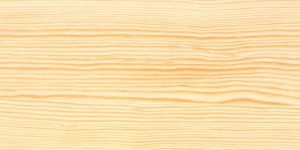To smooth out rough wood, start by sanding it with coarse sandpaper, then switch to finer grits for a smooth finish. Sand in the direction of the wood grain for best results.
Rough wood surfaces can be a challenge, but with the right techniques, you can transform them into smooth, polished pieces. Whether you’re working on a DIY project or refinishing furniture, knowing how to smooth out rough wood is essential. By following simple steps and using the correct tools, you can achieve professional-looking results.
In this guide, we will explore the best methods for smoothing out rough wood surfaces, giving you the knowledge and confidence to tackle your woodworking projects with ease.
Introduction To Wood Finishing
The Importance Of Smooth Wood
Smooth wood not only enhances the appearance of furniture and woodwork but also ensures a professional and polished finish. It creates a surface that is more receptive to stains, paints, and varnishes, resulting in a more even and consistent application.
Common Challenges In Smoothing Wood
- Uneven grain patterns
- Surface imperfections
- Difficult-to-reach areas
Tools For The Job
When it comes to smoothing out rough wood, having the right tools for the job is essential. Whether you prefer the precision of hand tools or the efficiency of power tools, there are several must-have equipment options to consider.
Hand Tools Vs. Power Tools
Hand tools and power tools each have their own advantages when it comes to smoothing out rough wood. Hand tools, such as hand planes and chisels, offer greater control and precision, making them ideal for fine woodworking projects. On the other hand, power tools like electric sanders and planers are more efficient for larger-scale projects and can save significant time and effort.
Must-have Equipment For Smoothing Wood
When it comes to smoothing out rough wood, there are several must-have tools and equipment that can make the job easier and more efficient. These include:
- Electric sander for fast and uniform smoothing
- Hand plane for precise and controlled wood shaping
- Chisels for intricate detailing and fine adjustments
- Wood rasp for shaping and smoothing curved or irregular surfaces
- Block plane for end grain and edge smoothing
- Scraper for removing thin layers of wood and achieving a smooth finish
- Woodworking clamps for securing wood during smoothing processes
- Safety goggles and dust masks for protection during wood smoothing
Preparing The Wood Surface
Preparing the wood surface before smoothing it out is crucial for achieving a professional finish. This step involves cleaning the wood and assessing its condition to determine the best approach for achieving a smooth result.
Cleaning The Wood
Begin by removing any dirt, dust, or debris from the wood surface using a soft brush or vacuum cleaner. For tougher grime, use a mild detergent solution and a soft cloth to gently clean the wood. Ensure the wood is completely dry before proceeding to the next step.
Assessing The Wood Condition
Inspect the wood for any imperfections such as cracks, knots, or raised grain. Address these issues by filling in the cracks with wood filler, stabilizing knots with a shellac-based primer, and sanding down any raised grain. This assessment will help you understand the level of work required to achieve a smooth finish.
Sanding Techniques
Learn the proper sanding techniques to smooth out rough wood for a professional finish. Begin with coarse-grit sandpaper and gradually work your way up to finer grits, making sure to sand with the grain of the wood. Use a sanding block for even pressure and take breaks to avoid over-sanding.
Choosing The Right Sandpaper
When it comes to sanding rough wood, the first step is to choose the right sandpaper. The grit of sandpaper you use will depend on the severity of the roughness. For instance, a 60-grit sandpaper will be suitable for removing deep scratches, while a 120-grit sandpaper will work well for smoothing out the surface.
Manual Sanding Tips
Manual sanding is a great option for small woodworking projects. To smooth out rough wood, start by sanding along the grain of the wood with a coarse grit sandpaper and then progress to a finer grit. Make sure to keep the sandpaper flat against the surface to prevent uneven sanding. Also, remember to wear a mask and goggles to protect yourself from the dust.
Using Orbital Sanders
If you have a large woodworking project, using an orbital sander can save you time and effort. An orbital sander uses a sanding pad that moves in a circular motion, making it easier to sand large surfaces. However, it’s important to choose the right sanding pad and grit of sandpaper to avoid damaging the wood. Start with a coarse grit sandpaper and then progress to a finer grit for a smooth finish.
In conclusion, sanding rough wood can be a tedious task, but choosing the right sandpaper and using the proper sanding techniques can make the process easier and more efficient. Whether you choose to sand manually or use an orbital sander, make sure to take your time and work carefully to achieve a smooth and polished surface.
Planing And Scraping
Smooth out rough wood by using a planer and scraper for a professional finish. Start by planing the wood to remove surface imperfections, then use a scraper to achieve a smooth, even surface. This process ensures a flawless result for your woodworking project.
Using a hand plane can smooth out rough wood easily.
Using A Hand Plane
A hand plane helps in leveling the surface of wood.
It is important to adjust the blade for desired thickness.
Scraping For A Finer Finish
Scraping is great for achieving a smoother finish.
Use a cabinet scraper for removing small imperfections.
Scraping is effective for removing difficult grain tear-out.
Chemical Smoothing Options

Achieve a smooth finish on rough wood with chemical smoothing options. Explore different products and techniques to effectively smooth out and enhance the natural beauty of wood surfaces. Transform rough wood into a sleek and polished final product with the right chemical smoothing approach.
When To Use Chemical Strippers
Chemical strippers are best for removing old finish from rough wood.
Applying Wood Conditioners
Wood conditioners prepare the surface for a smooth finish.
Filling Gaps And Cracks
Smooth out rough wood by filling gaps and cracks with wood filler or putty. Apply the filler with a putty knife, then sand the wood smooth once the filler dries. This simple technique ensures a flawless finish for your woodworking projects.
Filling gaps and cracks is an essential step in smoothing out rough wood. Before you can achieve a seamless finish, you need to address any imperfections in the wood’s surface. Here are the key considerations when filling gaps and cracks in wood.
Selecting Wood Fillers
When selecting a wood filler, there are two primary types to consider: water-based and solvent-based. Water-based fillers are easy to clean up with soap and water and are suitable for small repairs. Solvent-based fillers are more durable and better suited for larger repairs. Additionally, there are different types of fillers based on the type of wood, so choose a filler that matches your wood type for the best results.
Technique For A Seamless Finish
To achieve a seamless finish, start by cleaning the surface of the wood. Then, apply the filler in the gaps and cracks using a putty knife. Be sure to overfill the gaps slightly to ensure a tight bond. Once the filler has dried, sand the surface using a fine-grit sandpaper to smooth out any rough areas. Repeat the process until the surface is even and smooth.
When filling larger gaps, consider using a two-part epoxy filler, which is more durable and can handle heavier loads. For smaller gaps and cracks, a simple wood filler will suffice.
In conclusion, filling gaps and cracks is a crucial step in smoothing out rough wood. By selecting the right wood filler and using the proper technique, you can achieve a seamless finish that enhances the natural beauty of the wood.
Finishing Touches
Smooth out rough wood with these finishing touches. Enhance the texture and appearance of your woodwork by sanding it down and applying a high-quality wood finish. Achieve a polished and professional look with these simple steps.
Applying Stain
Applying stain is a crucial step in the finishing process of rough wood. It not only adds color but also helps to protect the wood from moisture and other environmental factors. To apply stain, first, sand the wood with fine-grit sandpaper, then clean it with a tack cloth to remove any dust or debris. Next, apply the stain with a brush or cloth, working in the direction of the grain. Allow the stain to dry completely before applying a second coat, if desired.
Choosing The Right Sealant
Choosing the right sealant is essential to protect your newly stained wood from damage. There are various types of sealants available, including polyurethane, varnish, and shellac. Polyurethane is a durable and versatile option that can be used on both indoor and outdoor projects. Varnish provides a glossy finish and is ideal for indoor use. Shellac is a natural, eco-friendly option that provides a protective layer while maintaining the wood’s natural color. When selecting a sealant, consider the project’s location and the level of durability required.
In conclusion, finishing touches are crucial in achieving a smooth and refined look for your rough wood project. Applying stain and choosing the right sealant not only protects the wood but also enhances its beauty. Remember to sand the wood thoroughly before applying any finishing touches and allow adequate drying time between coats.
Maintenance And Care
Maintenance and care are essential for preserving the look and quality of your wood furniture or surfaces. By following simple tips and strategies, you can ensure your rough wood stays smooth and beautiful for years to come.
Regular Cleaning Tips
Regularly clean your rough wood surfaces with a damp cloth to remove dust and dirt. Avoid using harsh chemicals that can damage the wood.
- Dust with a soft cloth regularly
- Use mild soap and water for cleaning
- Avoid abrasive cleaners or materials
Touch-up Strategies
For minor scratches or imperfections, consider using touch-up products that match your wood’s finish. This can help maintain its smooth appearance.
- Use wood fillers for deeper scratches
- Apply a fresh coat of finish as needed
- Sand rough spots gently before refinishing
Troubleshooting Common Issues
When smoothing out rough wood, you may encounter some common issues that can impede your progress. Here are some tips to help you troubleshoot and overcome these challenges:
Dealing With Residue
Residue buildup can be a problem when sanding wood. To tackle this issue:
- Clean the surface thoroughly before sanding.
- Use a tack cloth to remove dust and debris between sanding sessions.
- Avoid overloading the sandpaper with residue by sanding in smaller sections.
Fixing Uneven Texture
If you notice uneven texture on the wood surface, try these solutions:
- Inspect the wood for any raised grain or knots that may be causing the unevenness.
- Sand the problem areas with a finer grit sandpaper to level out the texture.
- Consider using a wood conditioner before sanding to prevent blotchiness.

Frequently Asked Questions
How Can I Smooth Out Rough Wood?
To smooth out rough wood, start by sanding the surface with coarse-grit sandpaper to remove any splinters or imperfections. Then, gradually work your way up to finer-grit sandpaper for a smoother finish. Remember to sand along the grain of the wood to avoid damaging it.
Finally, wipe the surface clean and apply a wood conditioner or sealant for a polished look.
What Tools Do I Need To Smooth Rough Wood?
To smooth rough wood, you will need a few essential tools. These include sandpaper in various grits, ranging from coarse to fine, a sanding block or sanding machine to hold the sandpaper, and a dust mask or respirator to protect yourself from inhaling fine wood particles.
Additionally, having a wood conditioner or sealant on hand is recommended for finishing touches.
Can I Use A Power Sander To Smooth Rough Wood?
Yes, using a power sander can be an efficient way to smooth rough wood. A random orbital sander or a belt sander can help speed up the sanding process and provide a more consistent finish. However, be mindful of the sander’s power and speed to avoid damaging the wood surface.
Always follow the manufacturer’s instructions and use the appropriate grit sandpaper for the task at hand.
How Do I Remove Stains From Rough Wood?
To remove stains from rough wood, start by sanding the affected area gently with fine-grit sandpaper. If the stain persists, you can try using a wood bleach or oxalic acid solution to lighten or remove the stain. Always test the product on a small, inconspicuous area first and follow the instructions carefully.
Afterward, sand the area again and apply a wood conditioner or sealant for a smooth and uniform finish.
Conclusion
Smoothing out rough wood can be a simple yet rewarding process. By following the steps outlined in this blog post, you can transform your wooden surfaces into polished and attractive finishes. Remember to start with the right tools, take your time, and use proper sanding techniques.
With a little patience and effort, you can achieve smooth and professional-looking results. So go ahead, get started, and enjoy the satisfaction of a job well done.


